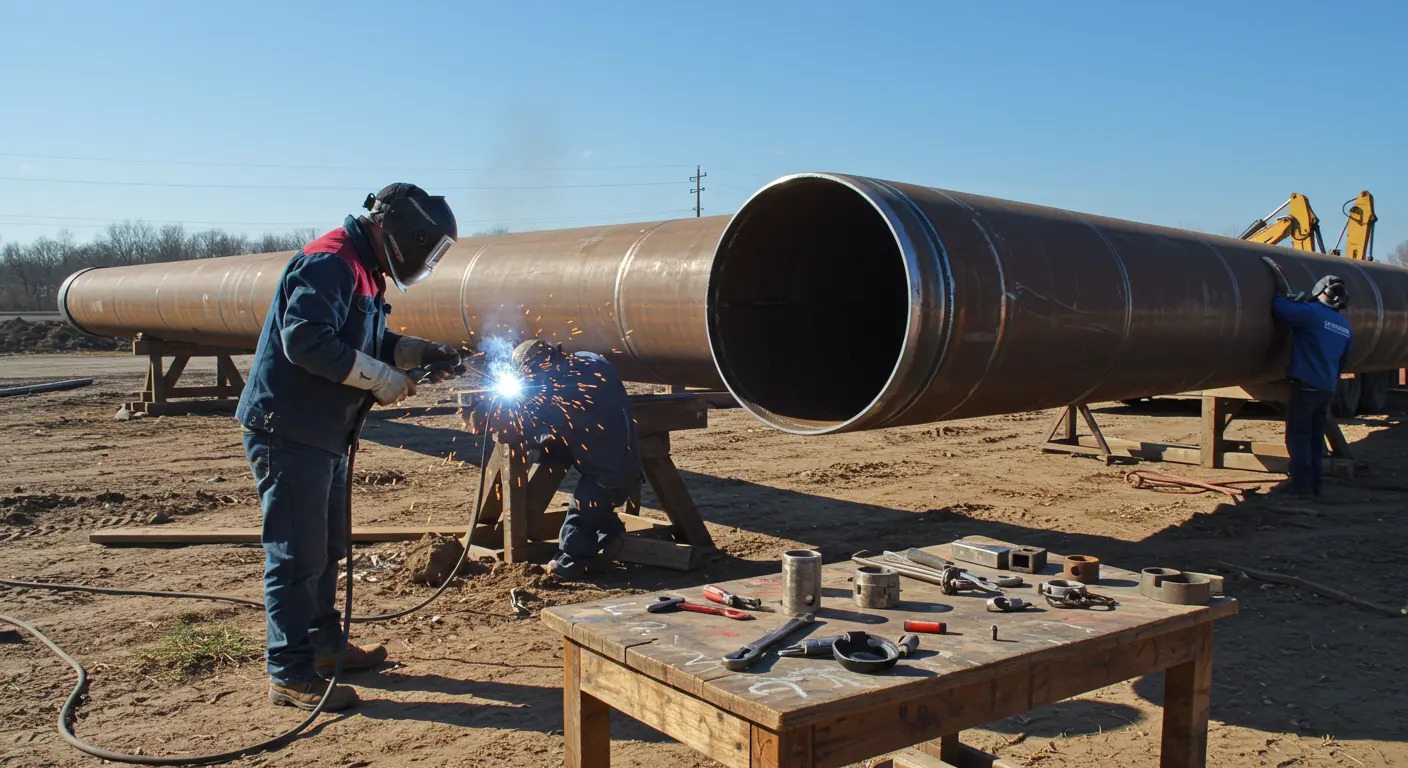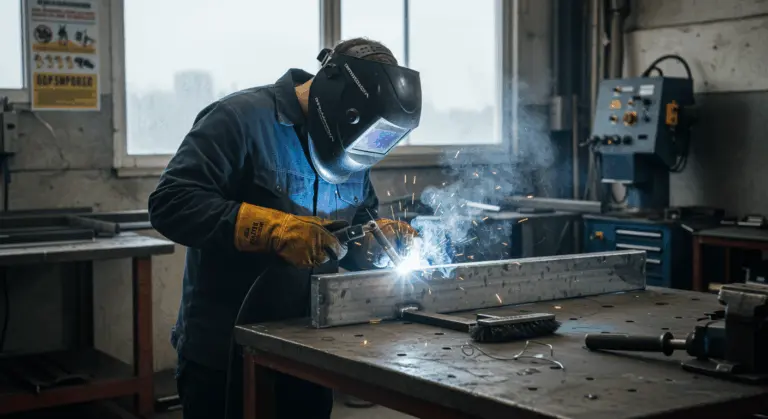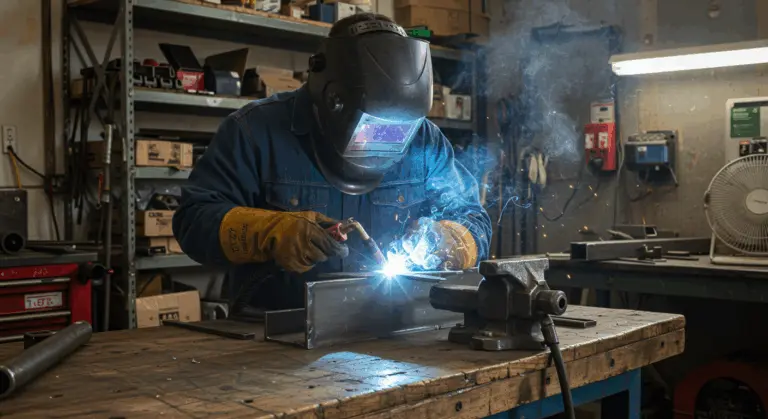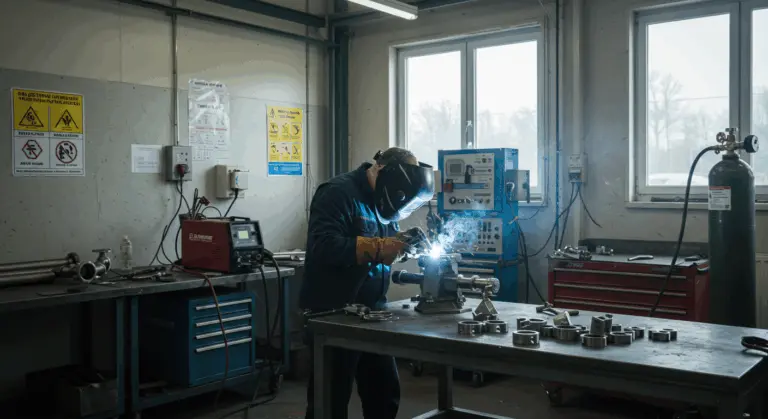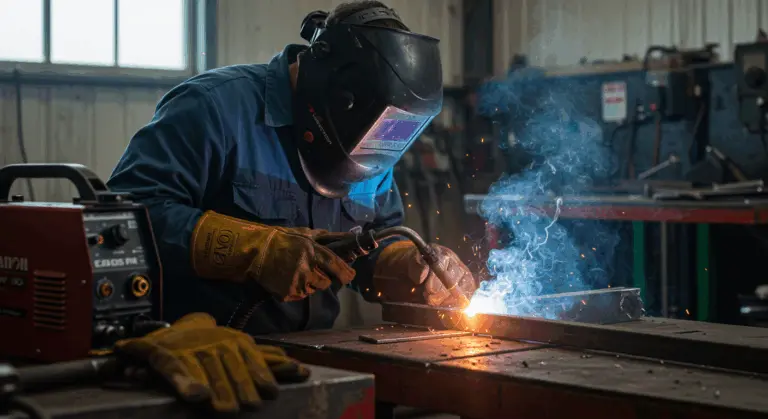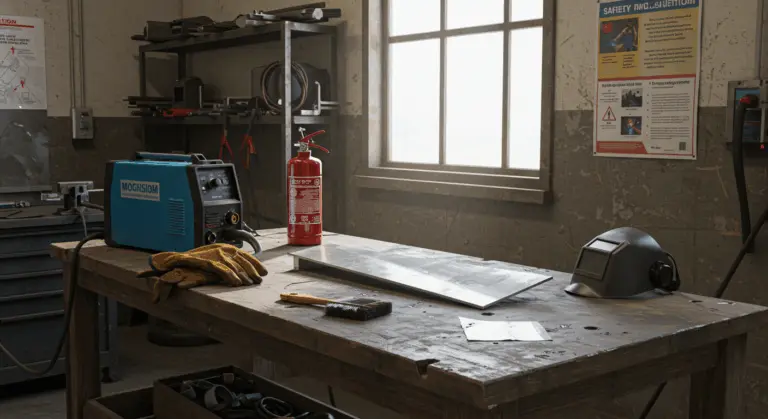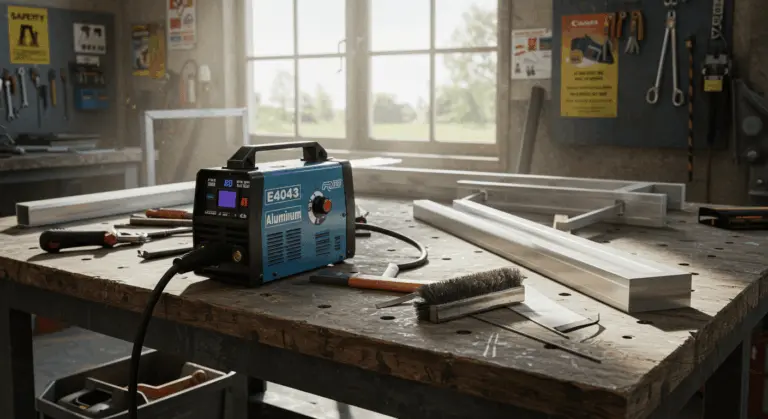Understanding Pipeline Welding – An Overview
Pipeline welding represents a specialized discipline dedicated to joining pipes that carry vital substances—water, chemicals, and gas—across vast networks. Fundamentally, a welder’s mission involves installing and repairing these critical pipe systems that form the backbone of modern infrastructure.
These craftsmen carefully select and transport materials, expertly assemble pipe sections using diverse welding techniques, and execute precise cutting and reshaping operations. Every weld must guarantee the pipeline’s structural integrity and operational longevity.
Pipeline welding differs from conventional welding because The work frequently occurs in challenging environments—such as remote locations, extreme weather, or underwater—and welders must maintain high quality standards to protect public safety and the environment.
Success requires specialized mastery of metallurgy, welding processes, and rigorous inspection techniques. Welds must endure tremendous pressures and stresses while transporting potentially volatile or hazardous materials across hundreds of miles. This fusion of technical expertise and hands-on skill transforms pipeline welding into both a formidable challenge and a deeply rewarding career pursuit.
Key Techniques Used in Pipeline Welding
Pipeline welding employs several specialized techniques to forge robust, enduring connections between pipe sections. The predominant methods fall within arc welding processes—techniques that use electricity to generate the intense heat required for melting and fusing metals.
Metal Inert Gas (MIG) welding, also recognized as Gas Metal Arc Welding (GMA), finds frequent application in pipeline construction. This process continuously feeds wire electrode through a welding gun while inert gas creates a protective shield around the weld pool, preventing atmospheric contamination. MIG welding offers clear advantages: accelerated welding speeds and a relatively gentle learning curve make it ideal for specific pipeline applications.
Tungsten Inert Gas (TIG) welding, or Gas Tungsten Arc Welding (GTA), serves as another fundamental technique in pipeline construction. TIG welding employs a non-consumable tungsten electrode paired with separate filler material, delivering unparalleled control and producing immaculate, precision welds. This method proves invaluable for the root pass in pipeline welding, where accuracy becomes absolutely critical.
Shielded Metal Arc Welding (SAW)—commonly known as stick welding—remains widely used in pipeline construction, particularly under challenging field conditions. This versatile method utilizes flux-coated electrodes that naturally shield welds from contamination, proving effective even when battling wind or harsh outdoor environments.
The choice of welding method depends on several important factors:
Welding Positions Explained – 1G to 6G
Welding positions represent standardized designations that precisely describe weld joint orientation during the welding process. In pipeline welding, mastering diverse positions becomes essential—pipes often remain fixed and immovable in field conditions. Position codes employ numbers (1-6) indicating orientation and letters (G for groove welds, F for fillet welds) specifying joint type.
| Position | Pipe Orientation & Rotation | Welding Details & Challenges |
| :— | :— | :— |
| 1G | Horizontal, can be rotated. | Easiest position; welder works on top as gravity helps control the weld pool. |
| 2G | Vertical, can be rotated. | Welder performs a horizontal weld, requiring skill to prevent sagging. |
| 3G | Vertical, fixed. | Welder must work up or down the joint, fighting gravity’s direct pull. |
| 4G | Overhead, fixed. | Highly difficult; welder works from below the joint against gravity. |
| 5G | Horizontal, fixed. | Critical for pipelines; requires welding in flat, vertical, and overhead positions in one pass. |
| 6G | 45° angle, fixed. | The most complex position, combining all other challenges. Certification qualifies for all other positions. |
Mastering these positions—particularly the demanding 5G and 6G—distinguishes pipeline welders from general welders. This expertise provides the foundation for career advancement within the field.
Career Paths in Pipeline Welding
Pipeline welding offers various career advancement opportunities within this respected skilled trade. Most professionals launch their journey with foundational general welding education before specializing in pipe-specific techniques. This educational progression typically begins at vocational schools, community colleges, or specialized welding institutes offering AWS-accredited programs.
Entry-level opportunities frequently emerge as apprenticeships or helper roles with pipeline contractors. These positions provide valuable hands-on experience under seasoned welder mentorship. Newcomers develop practical skills while absorbing industry standards and safety protocols. Physical fitness and endurance face early testing—the work regularly demands challenging conditions and intensive manual labor.
As welders accumulate experience and additional certifications, they advance to journeyman pipeline welder status. At this stage, professionals demonstrate mastery across various welding positions and techniques, especially the formidable 5G and 6G positions. Meticulous attention to detail becomes paramount—pipeline welders must consistently produce work that survives rigorous inspection standards.
Experienced pipeline welders may choose several advancement paths:
-
Welding Inspector: Leveraging practical knowledge to ensure quality and safety standards are met.
-
Supervisor: Managing teams of welders on large projects.
-
Welding Engineer, Consultant, or Instructor: Sharing expertise with the next generation.
Many pipeline welders embrace travel positions, tackling major projects nationwide or internationally. These roles typically command premium compensation but demand considerable flexibility and willingness to work in isolated locations. Others specialize within particular industries—oil and gas, water infrastructure, or chemical processing—cultivating sector-specific expertise.
This combination of technical skill, physical ability, and safety awareness makes pipeline welding a demanding yet deeply fulfilling career path with exceptional growth potential.
Training and Certifications for Pipeline Welders
Becoming a qualified pipeline welder begins with solid foundational education. A high school diploma or equivalent serves as the minimum requirement, while courses in mathematics, physics, and metallurgy provide valuable background knowledge. From this foundation, aspiring pipeline welders should pursue quality training programs specifically targeting pipeline welding techniques.
The American Welding Society (AWS) is the leading certifying authority. Its Certified Welder (CW) program provides a performance-based credential that rigorously tests practical skills on specific procedures—no formal coursework required.
For pipeline specialists, AWS provides specific pipe welding endorsements that verify competency in this specialized arena. Additionally, API 1104 certification (American Petroleum Institute standard for pipeline welding) enjoys high demand within the oil and gas sector, demonstrating proficiency in techniques essential for fuel transmission pipelines.
Beyond AWS certifications, welders may pursue other credentials depending on their career goals:
-
Specialized certifications for underwater welding or high-pressure piping systems.
-
Certifications for specific materials like stainless steel or exotic alloys.
-
Company-specific qualification tests required for certain projects.
Continuing education stays important throughout a pipeline welder’s career journey. As innovative technologies and techniques emerge, professionals must regularly refresh their skills and certifications. Many seasoned welders pursue advanced certifications or specialized training to boost their marketability and earning potential.
Quality training and recognized certifications provide significant returns in pipeline welding. Properly certified welders command higher wages, enjoy enhanced job security, and gain access to more prestigious and challenging projects throughout their careers.
Safety Standards and Challenges in Pipeline Welding
Pipeline welding has unique safety challenges that distinguish it from other welding specialties. The work environment itself often poses the primary challenge—pipeline welders frequently operate in uncomfortable or hazardous positions. Whether laboring underground in cramped trenches, underwater for marine pipelines, or at dizzying heights for industrial installations, these professionals must maintain flawless technique while managing environmental dangers.
Extreme weather conditions significantly increase these challenges. Pipeline projects march forward through blistering heat, bone-chilling cold, and every harsh condition imaginable. Welders must adapt their techniques to accommodate how temperature affects metal properties while simultaneously protecting themselves from environmental hazards.
The most critical safety concern comes from pipeline contents themselves. Welders routinely work on pipes transporting flammable gases, volatile chemicals, or high-pressure steam. These scenarios demand stringent safety protocols—proper ventilation, gas detection equipment, and sometimes complete pipeline evacuation before welding can commence.
Industry safety standards from organizations like the Occupational Safety and Health Administration (OSHA) and the AWS set detailed regulations for:
-
Personal protective equipment (PPE)
-
Ventilation, atmospheric testing, and confined space entry
-
Electrical safety and fire prevention
-
Emergency response procedures
Physical strain presents another significant challenge. The awkward positions demanded by pipeline welding—particularly in 5G and 6G positions—can trigger musculoskeletal injuries over time. Successful pipeline welders develop techniques minimizing strain while preserving weld quality, often incorporating ergonomic principles into their work practices.
Respiratory protection demands special attention in pipeline welding. Confined spaces where many pipeline welds occur can trap hazardous fumes, making proper ventilation and respiratory equipment absolutely essential. Welders must recognize situations requiring protection beyond standard welding helmets.
Despite these significant challenges, proper training, strict adherence to safety standards, and appropriate equipment effectively mitigate risks. The pipeline welding industry continuously advances safety practices through technological innovations, enhanced training programs, and hard-won lessons from incident investigations.
Job Outlook and Salary Expectations for Pipeline Welders
Employment prospects for pipeline welders look very promising, with projections indicating total welder employment across all specialties will surpass 463,000 positions by 2033. Within this expansive field, pipeline welders occupy a particularly favorable position due to their specialized expertise and the persistent need for infrastructure development and maintenance.
Demand for pipeline welders depends on several important factors:
-
Infrastructure Maintenance: The ongoing need to repair and replace aging pipelines.
-
New Construction: Expansion of natural gas, water, and industrial networks.
-
Energy Sector: Continuous employment for projects in oil and gas.
Compensation for pipeline welders reflects the specialized nature of their skills and the demanding conditions they frequently encounter. Entry-level pipeline welders typically earn $40,000 to $60,000 annually, varying by location, project type, and specific employer. This starting range already surpasses many entry-level positions requiring comparable educational investment.
As pipeline welders accumulate experience and additional certifications—particularly in challenging positions like 5G and 6G—their earning potential increases substantially. Experienced pipeline welders commonly earn $80,000 to $120,000 annually, with specialists often exceeding these figures. Those embracing travel work—dubbed “road welders”—command premium wages, especially on large-scale projects with aggressive deadlines.
Beyond base salary, pipeline welders often benefit from overtime pay, which can dramatically boost annual earnings. Many projects—particularly in remote locations or during emergency repairs—demand extended hours generating substantial overtime compensation. Additionally, traveling welders often receive per diem payments covering living expenses while working away from home, effectively increasing take-home pay.
Benefits packages for pipeline welders vary by employer but typically encompass health insurance, retirement plans, and sometimes specialized coverage addressing unique professional risks. Union membership—common among pipeline welders—often provides additional benefits including pension plans and negotiated wage scales.
Geographic location significantly affects earning potential. Regions experiencing construction booms or facing welder shortages offer premium compensation. Similarly, specialized industries like offshore oil and gas or nuclear power generation typically pay higher wages due to additional skills and certifications required.
Innovations in Pipeline Welding Technology
The pipeline welding industry keeps advancing through technological innovations that significantly improve efficiency, quality, and safety. Recent years have witnessed remarkable advancements in welding equipment design, with manufacturers prioritizing improved power efficiency and more intuitive user interfaces for both MIG and TIG welding machines. These developments enable welders to achieve superior precision while reducing energy consumption and operational costs.
Portability motivates significant innovation efforts, addressing the reality that pipeline welding frequently occurs in remote or challenging locations. Modern welding machines showcase increasingly compact designs without sacrificing power or capability. Lightweight, ergonomic equipment reduces physical strain on welders while enabling work in confined spaces or difficult-to-access areas. Battery-powered options and fuel-efficient generators further enhance mobility for field operations.
Automation and mechanization keep changing specific aspects of pipeline welding. Orbital welding systems—which automatically rotate around fixed pipes creating consistent, high-quality welds—have become more sophisticated and accessible. These systems prove invaluable for critical applications where weld uniformity becomes paramount, such as high-pressure or thin-wall piping. Rather than replacing skilled welders, these technologies complement human expertise by handling repetitive tasks and standardized joints.
Advanced materials’ science has introduced innovative filler metals and consumables specifically engineered for pipeline applications. These materials deliver improved flow characteristics, superior corrosion resistance, and enhanced strength properties. Specialized electrodes and wires designed for specific pipe materials and contents help welders achieve exceptional results even under challenging conditions.
Digital technology has transformed pipeline welding operations. Modern welding machines incorporate sophisticated monitoring systems tracking parameters like amperage, voltage, and wire feed speed in real-time. This data helps welders maintain optimal settings while providing comprehensive documentation for quality assurance. Advanced systems even offer predictive maintenance features, alerting operators to potential equipment issues before costly failures occur.
Virtual reality and augmented reality training systems show promising potential in pipeline welding innovation. These technologies allow apprentice welders to practice techniques within simulated environments before working on actual pipelines. Immersive training reduces material waste, eliminates safety risks during learning phases, and accelerates skill development through immediate feedback.
As the industry continues its rapid evolution, pipeline welders who embrace these technological innovations while maintaining their fundamental skills position themselves for sustained success in this dynamic field.

